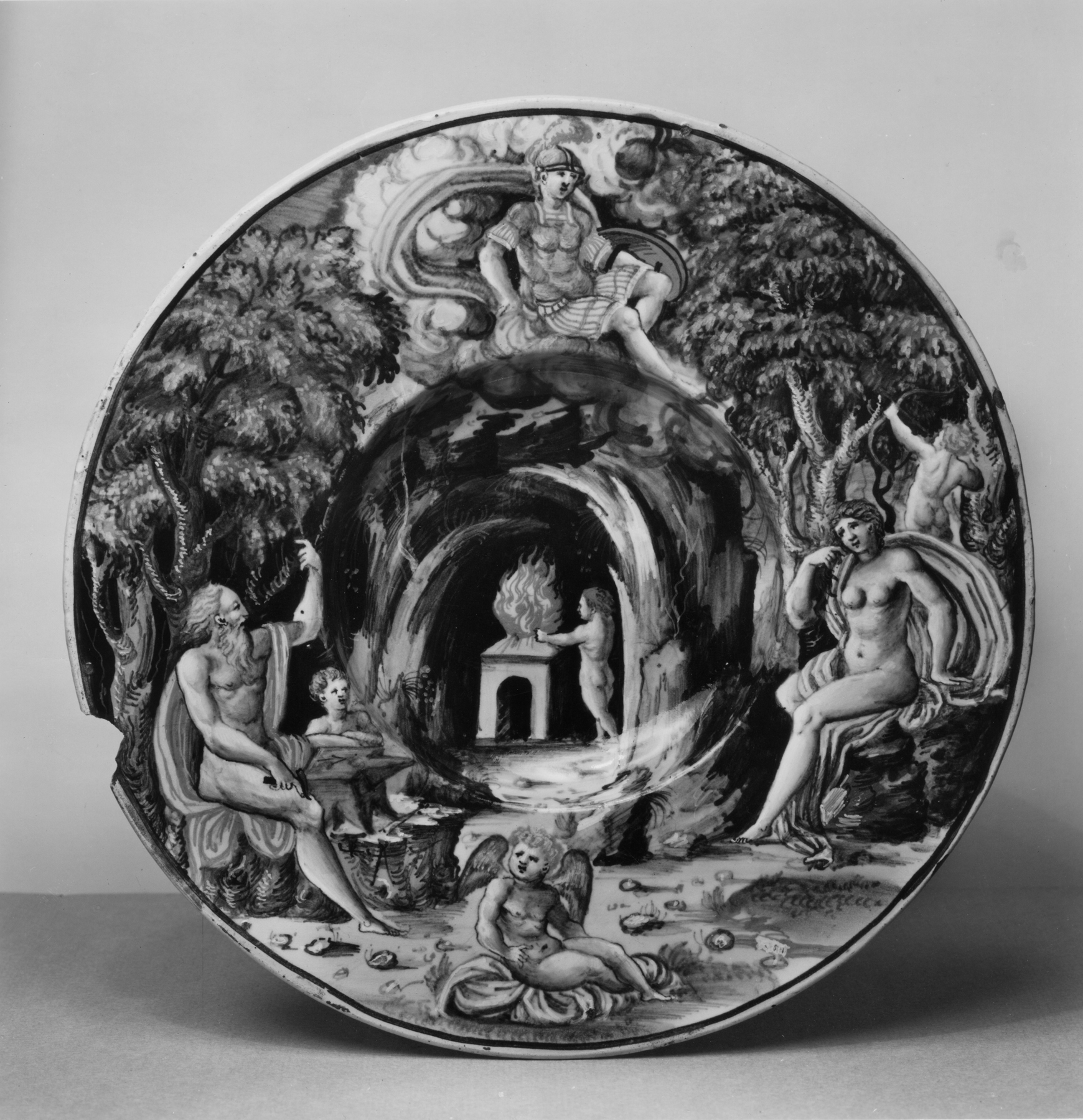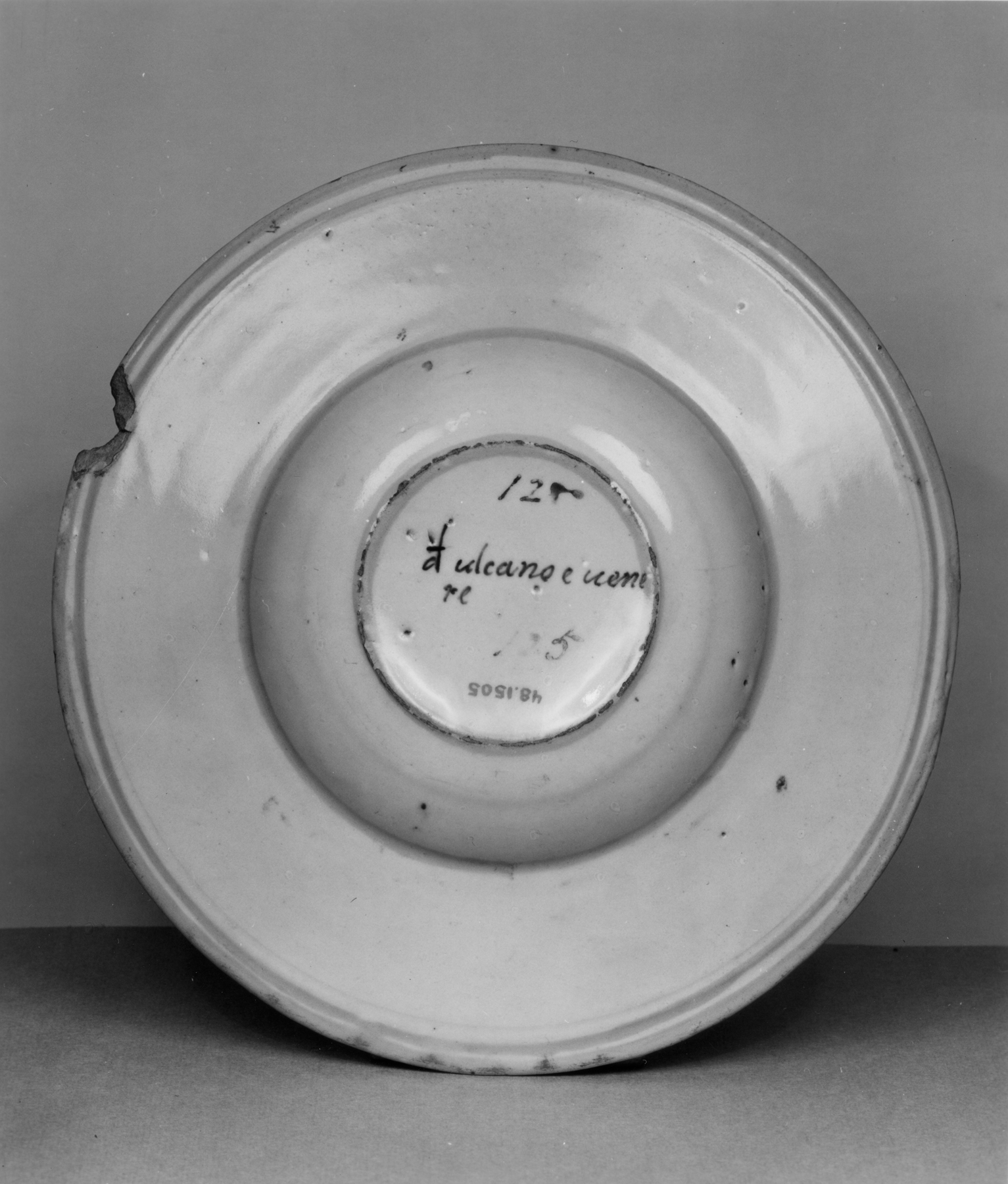Plate with Vulcan, Venus, and Mars
(Renaissance Europe )
The aged Vulcan, blacksmith of the gods, and his wife Venus, goddess of love, sit in a rocky clearing before a cave sheltering his forge. He gestures towards Mars, god of war, seated in a cloud above the forge, whom he recognizes as his rival for his wife's affection. Cupid, the son of Venus and Mars, sits in the center foreground. This composition, painted in blue, copper-green, yellow, ochre, manganese, grey, black and opaque white, may originate from an illustrated version of the ancient Roman poet Ovid’s (43 BCE-17 CE) “Metamorphoses”, and is characteristic of “istoriato” (tells a story) wares that depicted figures from Classical mythology. The back is stained with green and decorated with three concentric yellow circles, and one raised circle at the rim. In the center, the inscription “vlcano e vene / re” (Vulcan and Venus) is painted in blue. The plate was probably made in Urbino, a city renowned for its maiolica workshops during the sixteenth century. For more information on “istoriato” imagery, see 48.1487; for “maiolica,” see 48.1336.
Inscription
Provenance
Provenance (from the French provenir, 'to come from/forth') is the chronology of the ownership, custody, or location of a historical object. Learn more about provenance at the Walters.
Castellani Collection [date and mode of acquisition unknown] [no. 39]; Jacques Seligmann, Paris, by purchase; Henry Walters, Baltimore, 1911, by purchase; Walters Art Museum, 1931, by bequest.
Geographies
Italy, Urbino (Place of Origin)
Measurements
H: 1 3/4 x Diam: 9 15/16 in. (4.4 x 25.3 cm)
Credit Line
Acquired by Henry Walters, 1911
Location in Museum
Accession Number
In libraries, galleries, museums, and archives, an accession number is a unique identifier assigned to each object in the collection.
In libraries, galleries, museums, and archives, an accession number is a unique identifier assigned to each object in the collection.
48.1505




